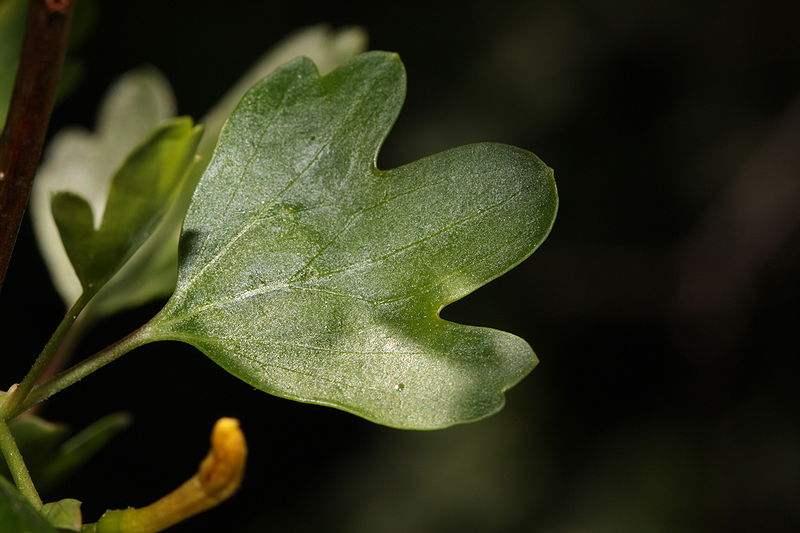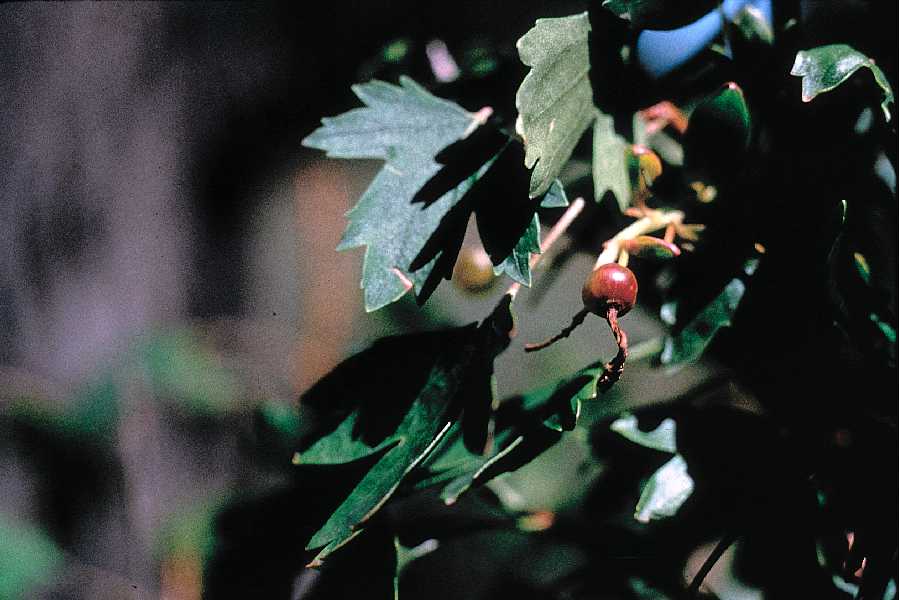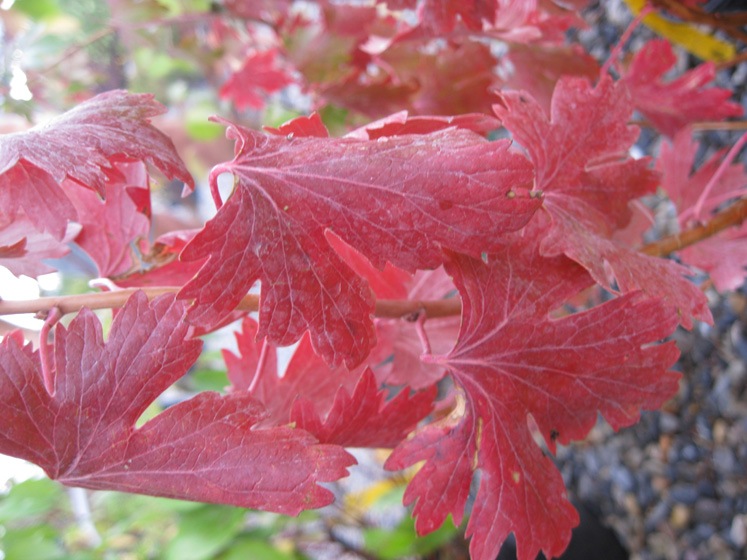| PSC 2620: Woody Trees and Shrub | Course Home | Week 11 |
Ribes aureum - Golden Currant
Plant Viewer
 |
 |
| The leaf is 1/2 - 1 inch long with 3-5 lobes. Each lobe has teeth at the end. Image: Walter Siegmund | The flowers of the Golden Currant are yellow and five-petaled. They form in small racemes. Image: Gary A. Monroe © USDA-NRCS PLANTS Database |
 |
 |
| Small and edible round fruit forms in summer and ripens by fall. Image: D.E. Herman © USDA-NRCS PLANTS Database | The fall color of Golden Currant is deep and colorful. |
Plant Description
Ribes aureum, or Golden Currant, is a medium to large shrub that can grow between 6-12 feet tall with a variable width. It has an irregular growth habit with a poor ornamental form. The bark is grayish-brown in color and can have red overtones, with limited pubescence on young stems. It prefers well-drained soils, with little requirement for regular moisture.
The leaf is 1/2 - 1 inch long and has three to five lobes, with the ends of the lobes having a couple large rounded teeth. It is a light to medium green color and glabrous. The leaves are arranged alternately on the stem. In the fall the foliage turns a yellow, orange or red color.
In the spring to early summer, small racemes of yellow flowers appear. The flowers smell strongly of clove spice. Following the flowers, great amounts small rounded fruit, 1/4 - 1/2 in diameter, forms on the shrub. The fruit transitions through yellow and red colors before ripening to purplish-black color. The fruit is edible.
Landscape Use
Ribes aureum is more slightly more drought tolerant than Ribes alpinum, but its poor form makes it an inferior selection in most instances. The fruit is probably the best ornamental feature of the plant. Use it in a naturalized setting or particularly dry locations. Mass plantings help to hide the poor form of individual plants.
Points of Interest
Golden Currant is an attractive species to wildlife, who readily feast on the fruit.